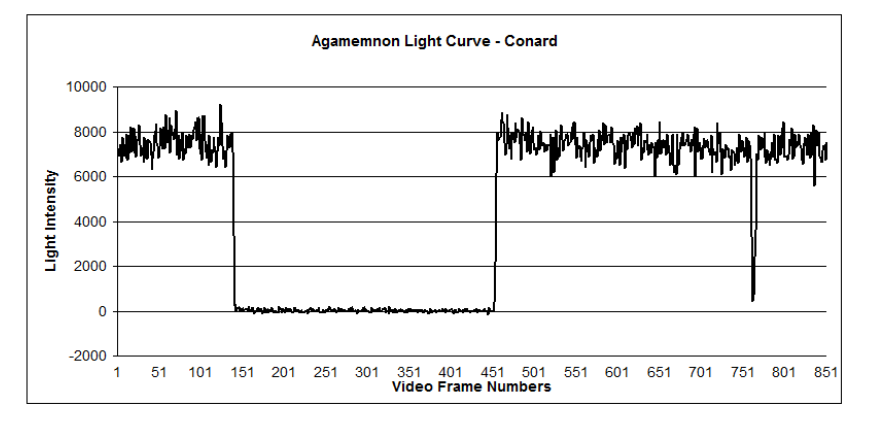Actually, the very first binary asteroid was discovered by stellar occultation in 1980. The evidence was rejected by the IAU, and wikipedia credits the first binary asteroid discovery to the Galileo spacecraft finding the moon of 243 Ida in 1993.
The first moon of the well known asteroid 216 Kleopatra was observed through stellar occultation in 1980. From this article:
As occultation czar David Dunham would later report in Sky &
Telescope, nine different observing stations visually timed blinkouts
of the 9th-magnitude star SAO 128066. Collectively these timings
traced chords across an irregular, elongated silhouette measuring
roughly 60 by 80 miles (95 by 130 km). "But there was an unexpected
secondary occultation too!" Dunham wrote. "Gerald Rattley and Bill
Cooke, observing from sites 2,000 feet apart near Loma Prieta,
California, independently and nearly simultaneously saw the star
disappear for about one second."
Dunham concluded that they had discovered a satellite of 216 Kleopatra. At that time, however, it was unknown if asteroids had satellites, and their evidence was not accepted. There was some stigma associated with the occultation methods. In 2008, the Keck II telescope finally verified the moons of 216 Kleopatra:

In 2011, one of Kleopatra's moon's size and orbit was shown to be consistent with the original 1980 occultation observations, referenced in this paper, and reconstructed here with the original chords:

Even though there were two independent chords that occulted the star, the IAU's former Minor Planet Director Center called the evidence "shoddy", even decades later. In 1980, he had refused to accept that asteroidal satellites existed.
Interestingly, even after vindication 30 years later, stellar occultation evidence for binary asteroid systems are still met with skepticism. For example, the wikipedia page for the asteroid 911 Agamemnon says a 2012 occultation is merely 'suggestive' of the Asteroid having a satellite. To me, the stellar occultation of the light intensity measurements from this paper, is far more than just suggestive, but instead clear evidence of a satellite of 911 Agamemnon:

The large steady dip is the main body of the asteroid passing over the V magnitude 8.0 star HIP 41337 = SAO 60804 = BD= +37° 1857 = HD 70920, spectral type K0. The small dip is the satellite passing over the star.
Note:
It's strange to me that the discovery of binary asteroid systems is met with skepticism since the method is essentially the same method often used to detect extra-solar planets (the transit method explained nicely in this answer).



